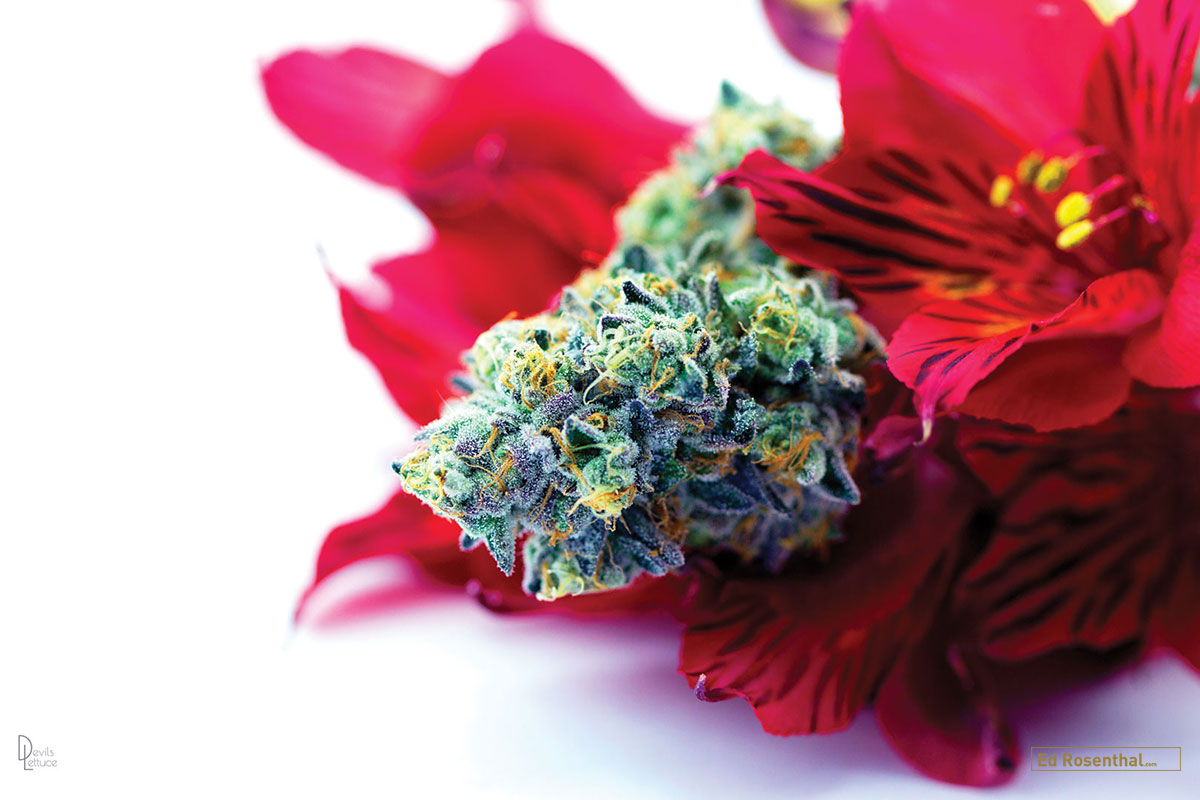Styling an Industry
BCoast GorillaGlue by DevilslettucePH
For Randi, the photographer behind the lens at DevilsLettucePH, quality image samples come in the form of the freshest herb. Cannabis transported straight from the plant into her hands is best, she says, while laughing at the notion of receiving buds squished away inside of a bag. Self taught and driven by a desire to help others find the healing nature of a plant demonized for centuries, Randi now finds herself redefining the design aesthetics of the world’s favorite botanical. Taking marijuana into the new legal era means applying upscale marketing techniques to the dankest strain selections. To achieve her images of cannabis, which bring the flower into an elevated retail space in much the same way as an advertising campaign for a beautiful bottle of perfume, Randi follows her inner intuition and only takes photographs that she herself enjoys.
BernersCookies by DevilslettucePH
“Time and time again, when I compromise for what others like the shot suffers,” she says while offering advice for newcomers. “Stay true to your soul and what jives with you.”
Sampling from the plethora of amazing genetics available in the San Fran-cisco Bay Area, Randi’s images playfully pull in other visual elements to enhance three main stars: beautiful, crystal-coated dried buds, marijuana plants in growth and concentrates with incredible structure and clarity. Ideally, the growers themselves provide Randi with their hand-picked selections.
“If you don’t have access to a grower and can’t grow your own, you can secure quality herbs at collectives,” she says.
Randi explains that cannabis can be a difficult subject to shoot because of the complexity of its surface and stresses always keeping the subject in focus. In her work she attempts to target an interesting and dynamic depth of field, an aspect of photography she has developed since her early days of documenting her explorations in nature.
Cannabis photography by DevilslettucePH
“I always liked to take pictures of nature or lines, but always at odd angles and creating a large DOF,” she says. “This to me created a more dramatic effect and helped the photo become more than that, it became more than just an image captured in time, it became an artist’s point of view, I was showing you how I saw the world.”
For Randi the photographs have become her vehicle to spread the healing message about medical marijuana. Diagnosed with Lyme disease about 11 years ago, she turned to cannabis after being prescribed medications that only made things worse.
“Cannabis has made life tolerable, without it I wasn’t very functional, al-ways sick,” she says. “Since cannabis was able to help me so much, I wanted to give back somehow and the only way I knew how was with photography. I saw a need — two years ago now — for more, in my mind, beautiful pictures. Images that would inspire others to change question how something so wonderful could be bad, something to help reverse the negative propaganda from the past.”
BlackDogKush by DevilslettucePH
With her husband’s encouragement and artistic insight — Randi reveals he picks many of the strains she documents and was the first to initially bring her mouth-watering buds from Cannabis Cups— she branched out from her current career as a software engineer at a tech company into the world of marijuana photography. Now, she says, her heart is in every image.
“Corny yes, but when my heart isn’t in it, it shows, so I tend to shoot with music.”
In order to find diversity in her shots she often explores pairing cannabis with props.
“I get bored with the same old same old, so I like to change it up,” Randi says. “I also like to find colors or props that speak to me about the stain or bud. Some of my favorites are crystals, rocks, wood and metal. Toys are a hoot and using other plants is fun too... it’s really just what sings to me at the time.”
GD TahoeOg by DevilslettucePH
“It can be more challenging working in a garden,” she says, “it’s the hardest to work directly in the environment.” Still, she looks forward to the opportunity to document marijuana plants in different scenarios. She says “my home studio, while more controlled, can also be limiting as I am forced to work with what is around as opposed to exploring further unknowns the environment. It is more fun to have diverse subject matter.”
As Randi develops her craft, she is optimistic that her images will help dispel negative stigmas that are still attached to the healing herb.
Join our cannabis community
Follow Us











